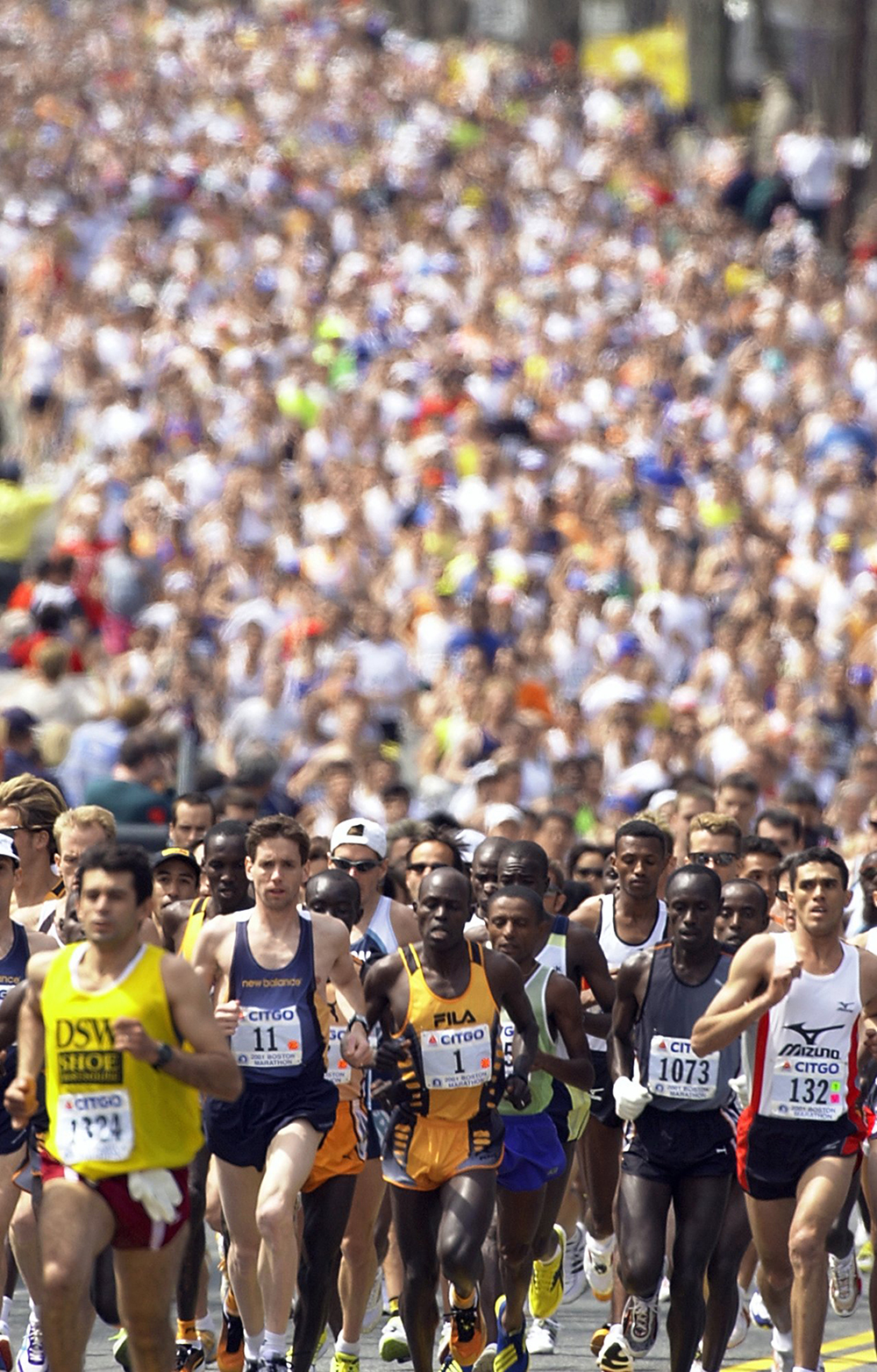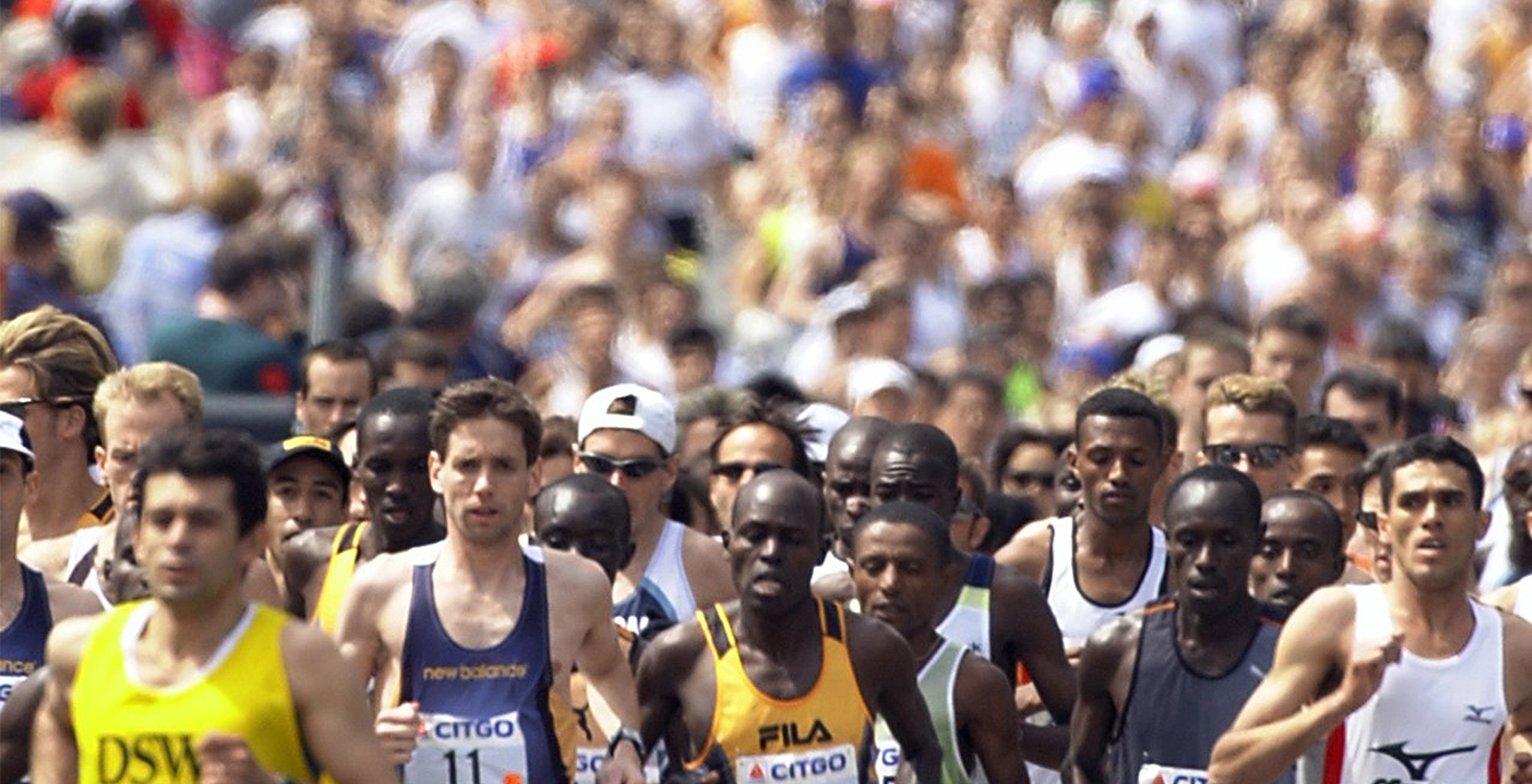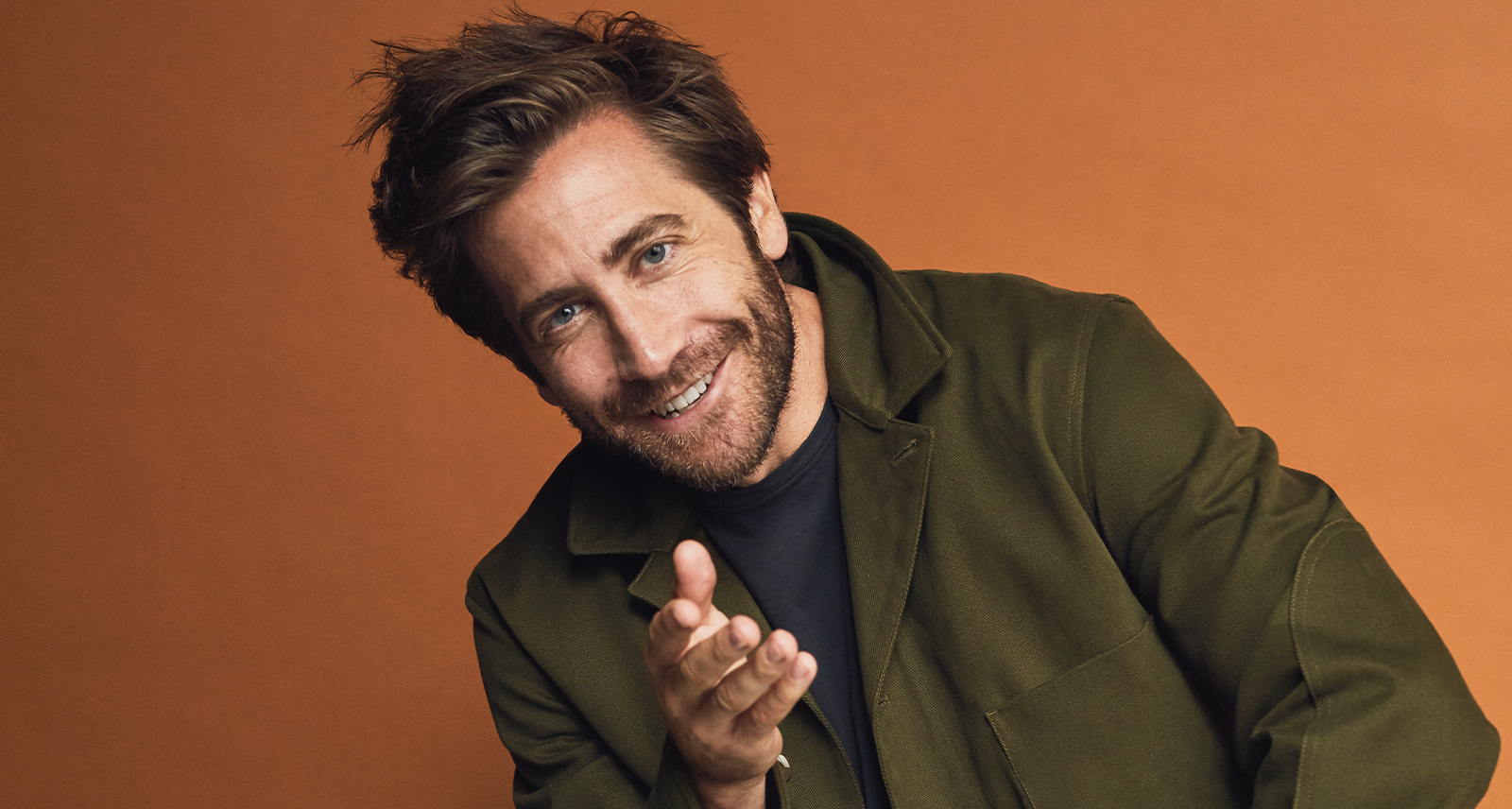Making Friends as a Grown Man Is Hard Enough. I Tried Doing It While Running the Boston Marathon
You have to qualify to compete in the Boston Marathon. The race has taken place annually since 1897 — held even during the two World Wars. It is difficult enough that it’s something to aspire to, but not so difficult that it’s impossible; 30,000 people run it every year.
The first time I ran it, in 2012, I trained solo and put so much pressure on myself during race day that I gave away the 42.2-kilometre run just 10 kilometres in. I couldn’t sleep a wink the night before, then stared at my watch constantly throughout the first stretch. I was so obsessed with my pace and finishing time that I started too fast and became both physically and mentally exhausted well before Heartbreak Hill, where the race truly begins. In marathon running, as in sales or seduction, overzealousness ruins everything.
But last year, I decided I was ready to try again. I needed to avenge that performance — and to focus on something other than just my kids and my job. I qualified for the 122nd edition of the Boston Marathon at the Ottawa Marathon. This time around, I owed my success to two friends, Mike and Mark, who had spent the months leading up to the race teaching me entirely different things — about running and about life.
A grown man making male friends is about as rare as a young boy investing in tech stocks. The forces of nature don’t put a priority on male happiness and, unless we’re preparing for a move, it can be hard for men to ask for help.
“Ironically, perhaps when we’re most in need of male friendships, that’s when we’re most absorbed in life, our kids, and work,” says Dr. John Ogrodniczuk, director of the psychotherapy program at the University of British Columbia, the country’s leading light on men’s mental health. “Guys devalue the need for friendships, but they are really essential at every stage of a man’s life.”
Having a hobby helps men to make those friendships. Guys bond with guy friends over shared passions — craft beer, maybe, or fashion, or drones. For me, it’s running — and I owe my relationships with both Mike and Mark to the sport.
Mike, originally from Saskatchewan, owns BlackToe Running in Toronto. We met during training, which can often get pretty punishing. And yet somehow, Mike always looked like he was having a good time. He has eight tattoos and has been in about two hundred hockey fights, but he’s not exactly a tough guy — when he’s not running, he’s usually wearing flip-flops. His downtown shoe store is located both next to and across the street from a bar, and he’s always quick to invite his friends to one of the two for a post-run beer.
Mark is a radio personality in Ottawa and the founder of iRun magazine, where I work. He’s a diligent teetotaller — analytical and faithful — and, unlike Mike and I, he rarely gets carried away. Good sense is his point of pride.
During training, the two men began to seem like they had become the angel and devil on my shoulders. You need both — recklessness and attention to detail — to break through your comfort zone and reach a new gear.
Early into my training, Mike had to stop running because he has ankylosing spondylitis, which causes persistent back pain, but he never stopped supporting his friends. Through his club, I met other devoted competitors and, after I bonked a race — despite knowing better, I went out too fast, too soon, and suffered the ignominious fate of walking — we all ran a practice marathon together. Those 42.2 kilometres got me back on my feet.
When you’re training for a marathon, quitting is always an option — which is exactly why a strong support system becomes so critical. The last thing my wife wants to hear about is my running woes. But other runners understand the love-hate relationship you develop with marathons. They appreciate the way their long, endurance-oriented distances abuse you, but also allow you to improve as you age. At 44, I’m not getting any faster. But I can optimize the speed I do have by developing experience. For older guys, especially guys looking to bond, there’s no better sport than marathon running. And Boston, of course, is the ultimate marathon.
•••
With the Boston Marathon as my end goal and two friends to train with, I had a through line for surviving the winter. I began training outdoors. Training, it should be clarified, is different than running. Running is going six kilometres around the block twice a week and then eating a steak. Training is going up and down a hill 12 times, then racing 400-metre sprints at your 5K pace eight times…and then eating a steak. I trained with Mike’s guidance alongside Lake Ontario in February, running so hard in front of Ontario Place that I threw up in my mouth. I felt engaged and powerful. I was preparing myself for Boston. I was racing myself into shape.
The first competition on my calendar was the Chilly Half Marathon in Burlington, and frankly, it knocked me on my ass. It was the start of the season and, like an optimistic child, I always include miracles as part of my race plan. Unfortunately, divine intervention never came. Instead, I arrived to race day with a fever, squaring off against the kind of cold that keeps your hands frozen even beneath two pairs of gloves. I took the BlackToe bus to the starting line, already looking forward to the flask of Jameson and cooler of beer waiting for me at the end of the race. Given the dire conditions, I was especially thankful to be in the company of a familiar crew.
“It’s not only about the race — life is lived in the space in between.”
It turns out the reassuring power of camaraderie persists even as you move up running’s ladder to the fast guys. Olympian Reid Coolsaet is the most accomplished Canadian marathon runner of his time, and the second-fastest Canadian marathoner in history. He has spent 15 years running beside Olympian Eric Gillis, who has the 10th-fastest marathon finishing time in Canadian history. (Mind you, that number is somewhat misleading; only five Canadians have ever run the marathon faster than Eric — it’s just that three of them have done so at least twice). Coolsaet says that while it may have been his and Gillis’s shared goal that brought them together initially, it was as their friendship developed beyond racing and accumulated depth that their lives really became enriched.
“The end result for Eric and I was always the Olympics, but I see it over and over again with guys as they become brothers: the goal is one thing, but the real pleasure is striving for something through blood, sweat, and tears,” says Coolsaet, a 39-year-old father of two. “Eric and I talk about more than running, and that’s what made our relationship more meaningful, more beneficial. Neither Eric nor I are the kind of guy to say, like, ‘Hey man, let’s talk,’ but it’s easy for us to say ‘Let’s go out for a run,’ which means the same thing.”
Just as Reid and Eric help each other, Mike and Mark kept me on track. As I struggled through then Chilly Half, I knew I would need them both to come back from it. The ground felt harder with each step, and brittle is not how you want to feel when you race. I gutted it out to the halfway point, maintaining the pace I’d been practising for Boston, but with the weather and my illness — there are a million excuses — I couldn’t maintain my stride any longer. People who I knew to be slower than me passed by, shouting encouragement, and I suddenly wished for them to get hit by a bus. I dropped my clip, then dropped it again. With each step, I considered whether or not I should walk. I crossed the finish line in 1:31:17, drank a beer with Mike on the bus home, called Mark in Ottawa, then didn’t run again for three weeks.
•••
Dr. Ogrodniczuk has a remedy for a common male behaviour pattern that rings true as I think back to my disheartening Chilly race. At his practice in Vancouver, he counselled a patient who was struggling with feelings of worthlessness brought on by unrealistic goals. “Instead of looking into the future, we reframed his outlook to focus on the present and make the most of his daily experiences. It’s not just about the goal, but enjoying the routine,” says Ogrodniczuk, mimicking the advice from Reid Coolsaet: it’s not only about the races — life is lived in the space in between. “If you can enjoy the moment — and this is where it helps to have a friend — you feel better about your life and stop pressing. Sometimes guys need a friend to remind them of that very thing.”
Men have a tendency to set unrealistic expectations, then feel down when we don’t live up to who we want to be. Friends, thankfully, remind us that we’re doing a great job as exactly the man we already are. After the Chilly, I took a long look in the mirror: I didn’t want to have waited six years to run Boston again just to end up making the same mistakes I had last time.
I kept training with BlackToe, but with Mike on crutches, Mark became my main man. Mark is more consistent than I am, and lives his entire life at a steady pace. To qualify for Boston, he ran something like 18 marathons. Which means he failed to qualify 17 times. The Long Road to Boston is the name of his second book. He has endurance. The kind of endurance I would need to learn as I fully committed to Boston. I began checking in with him every week about our preparations. Soon, we were having dinners at his house and one time, I even looked after his son. Our daily chats became as satisfying as the training.

“You grow this comfort level with people who become your training partners. You’re comfortable in that setting, and so training for a race with someone, it’s often like that person becomes your closest confidante — your best friend,” says Olympian Dylan Wykes, who, along with Rob Watson, forms one half of marathon running’s second-most-famous pair of male racing best friends after Eric and Reid. (Wykes has the third-fastest Canadian marathon finishing time, less than half a second slower than Reid’s).
Wykes has two kids and Watson just got married — which gives them plenty to talk about on their runs in Vancouver. “That bond grows super tight, like you’ve been on a journey and you’re helping each other give everything,” says Wykes. “It feels like you’re suiting up for life’s most important journey and, while you aren’t, it’s fun to experience emotions like that with a friend.”
Unfortunately, I didn’t have either of my running friends with me when I took on Hamilton’s Around the Bay, the oldest race in North America. It was 30 kilometres and my last race before Boston, and I was hell-bent on running a negative split — in other words, running the second half of the race faster than I ran the first half. That had become my only goal for Boston — to finish with grace.
I was still mourning Tom Petty and had “Free Fallin’,” “Mary Jane’s Last Dance,” “I Won’t Back Down” and “Learning to Fly” — the live version, which could resurrect the dead — on repeat. I ran Around the Bay with Jeff Moyle (the race director of the Canada Army Run and a quick little bastard) and we were neck and neck for the first 16K, talking the whole time, patient, until I turned on my music and started to roar.
As I passed other runners, I decided to take my wife to Jamaica. I thought about writing a book. The runner’s high convinced me I was not only going to score a personal best, but would end the race a better man. Then I ran out of gas at 22K. I turned off Tom Petty. Maybe my wife and I would just go to a friend’s cottage. Who has time for a book? I kept trudging forward, holding off Moyle, and finished the race well enough to host a party with Coolsaet afterwards at a Hamilton bar. Not quite what I was hoping for, but close enough. Boston, here I come.
•••
You’re never prepared enough for a marathon. There’s always an element of the unknown. But when Mike, Mark, and I arrived in Massachusetts, it felt like the dice were rolling our way. The city — the birthplace of the Dropkick Murphys, Good Will Hunting, and fried clams — reminds you, in a heavy Bostonian accent, to stop whining. A shrine was set up where the bombs had detonated back in 2013, but the spirit of the runners I encountered was buoyant. In Boston, the feeling between runners must be analogous to the feeling between actors at the Oscars. So many people do this sport, and yet so few make it here. High five!
It didn’t take long for nature to dampen our spirits. The morning of race day brought powerful gusts and huge, water balloon-sized raindrops. It was the coldest marathon the city had seen in 30 years. I had bought $200 sneakers and trained for months, but it all became irrelevant as I found myself wading through four inches of muck to find a bathroom. People around me layered garbage bags on top of their jackets as we collectively came to terms with the fact that none of us were likely to make our carefully calibrated goal times.
I waited with Mark in the corral for our 3:45 pace, but four minutes after the gun went off, adrenaline coursing through my veins, I left him. I knew that Mark would understand.
It’s hard to know what made my Boston experience so electric. The conditions were awful. My training was decent: a poor Chilly and a fair Around the Bay. But on race day, I felt the magic. And that’s why I run — because you never know. You keep doing it again and again like Reid Coolsaet and, along the way, you hope you’re lucky enough to find someone who reminds you to enjoy your trip.
Since I started toward the back at Mark’s pace with the 3:45 group, I spent the Boston Marathon passing people as I progressed. When the wind howled, I applauded. Even Heartbreak Hill wasn’t an issue. I felt released. I could run this race for the rest of my life.
Mike was cheering at the 40th kilometre. I spotted his BlackToe flag first — because of the wind, it looked more like a parachute — then saw his smiling face emerge from beneath a huge umbrella. I angled my way to him for a high five.
After three hours, 15 minutes, and 44 seconds, I crossed the finish line and let out a triumphant roar. In 2012, at 38, I ran-slash-walked the Boston Marathon and the race took me 3:58:44. At 44, with the support of my friends to spur me on, I hit my goal, shaving 40 minutes off my previous time, and ran a negative split. Afterwards, I met Mark back at our hotel and we wore our medals out to the bar.
Back in Toronto a few days later, I return to BlackToe. Mike is off his crutches and joins me for another run. It’s not just the goal of finishing the Boston Marathon that brings me back to the races again and again. It’s the friendships. Guys need those — I need them — to help us carry the weight of the world.










